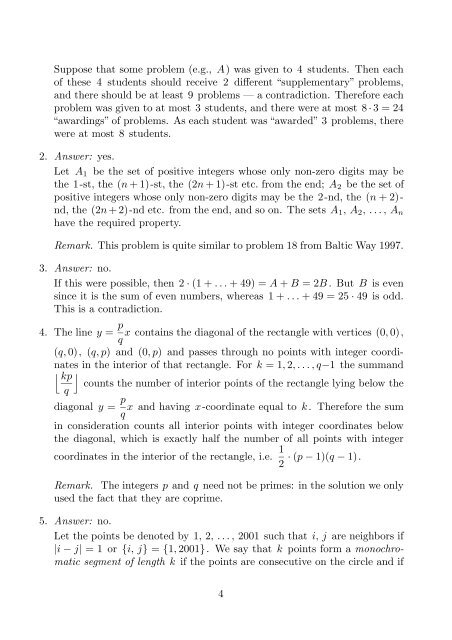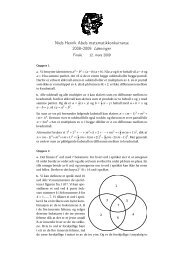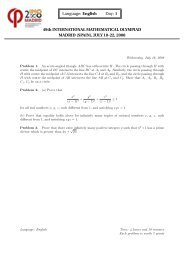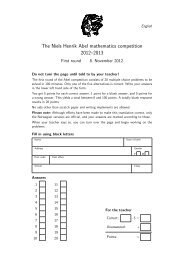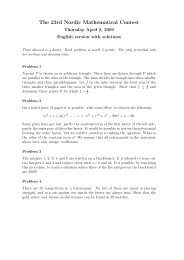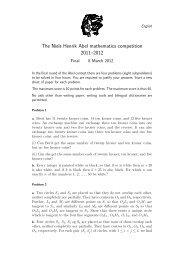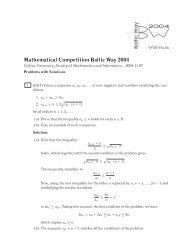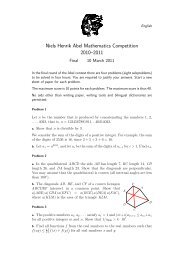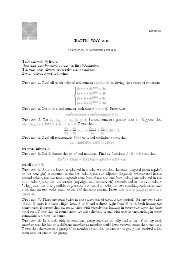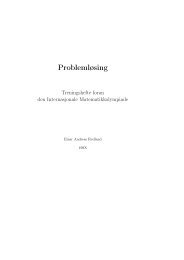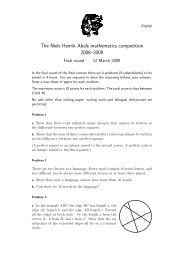Solutions - Georg Mohr-Konkurrencen
Solutions - Georg Mohr-Konkurrencen
Solutions - Georg Mohr-Konkurrencen
- No tags were found...
You also want an ePaper? Increase the reach of your titles
YUMPU automatically turns print PDFs into web optimized ePapers that Google loves.
Suppose that some problem (e.g., A) was given to 4 students. Then eachof these 4 students should receive 2 different “supplementary” problems,and there should be at least 9 problems — a contradiction. Therefore eachproblem was given to at most 3 students, and there were at most 8 · 3 = 24“awardings” of problems. As each student was “awarded” 3 problems, therewere at most 8 students.2. Answer: yes.Let A 1 be the set of positive integers whose only non-zero digits may bethe 1-st, the (n + 1)-st, the (2n + 1)-st etc. from the end; A 2 be the set ofpositive integers whose only non-zero digits may be the 2-nd, the (n + 2)-nd, the (2n + 2)-nd etc. from the end, and so on. The sets A 1 , A 2 , . . . , A nhave the required property.Remark. This problem is quite similar to problem 18 from Baltic Way 1997.3. Answer: no.If this were possible, then 2 · (1 + . . . + 49) = A + B = 2B . But B is evensince it is the sum of even numbers, whereas 1 + . . . + 49 = 25 · 49 is odd.This is a contradiction.4. The line y = p x contains the diagonal of the rectangle with vertices (0, 0),q(q, 0), (q, p) and (0, p) and passes through no points with integer coordinatesin the interior of that rectangle. For k = 1, 2, . . . , q−1 the summand⌊ kp⌋counts the number of interior points of the rectangle lying below theqdiagonal y = p x and having x-coordinate equal to k . Therefore the sumqin consideration counts all interior points with integer coordinates belowthe diagonal, which is exactly half the number of all points with integer1coordinates in the interior of the rectangle, i.e. · (p − 1)(q − 1).2Remark. The integers p and q need not be primes: in the solution we onlyused the fact that they are coprime.5. Answer: no.Let the points be denoted by 1, 2, . . . , 2001 such that i, j are neighbors if|i − j| = 1 or {i, j} = {1, 2001}. We say that k points form a monochromaticsegment of length k if the points are consecutive on the circle and if4


